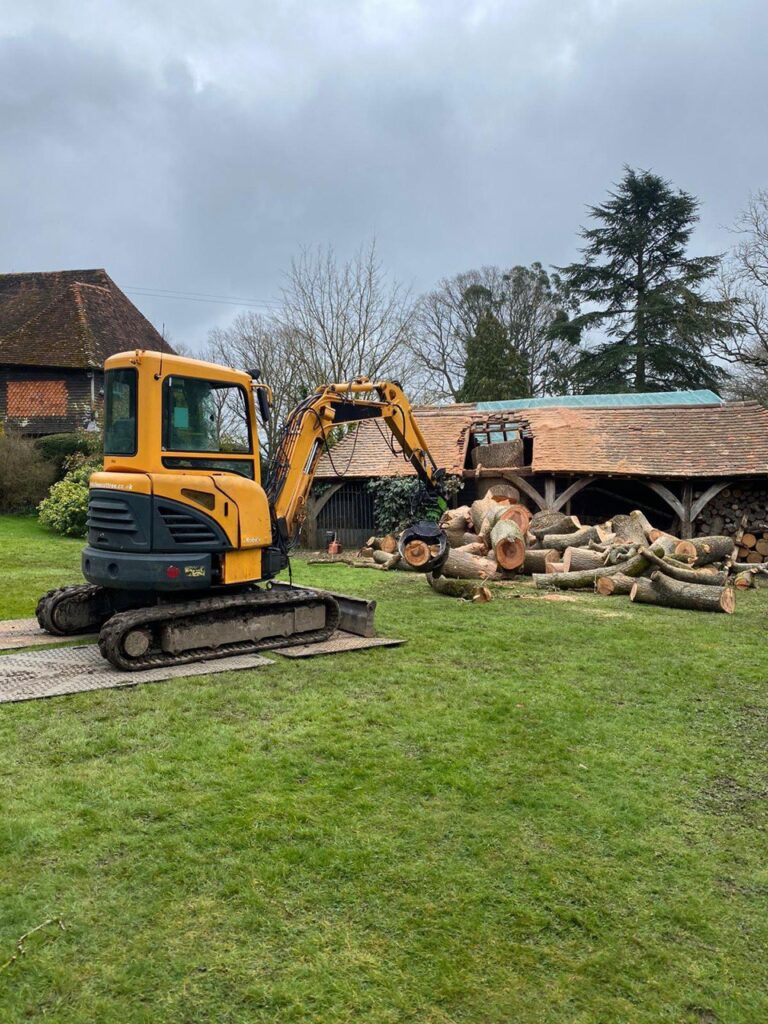Hedge cutting is often seen as an essential part of maintaining a garden’s aesthetic appeal. However, beyond creating neat and attractive landscapes, hedge cutting plays a crucial role in pest control – a benefit that many homeowners might overlook. At Sevenoaks Tree Surgeons, we understand the importance of regular hedge maintenance, not just for the visual appeal of your property in Sevenoaks, Kent, but also for keeping unwanted pests at bay. In this blog post, we’ll explore how hedge cutting contributes to pest control and why it should be an essential part of your garden care routine.
1. Removing Pest Habitats
Overgrown hedges provide the perfect hiding spots for a variety of pests, including rodents, insects, and even larger animals like foxes. Dense and untamed growth offers shelter and protection, making it difficult to identify and address infestations.
- What Can Happen: Untrimmed hedges can become breeding grounds for pests such as aphids, mites, and beetles. These pests can spread to other parts of your garden, affecting trees, flowers, and shrubs.
- Why It Matters: Regular hedge cutting removes the thick, dense areas where pests tend to nest, reducing the chances of an infestation. By keeping your hedges tidy, you can also identify and treat pest problems before they escalate.
2. Improving Airflow and Reducing Dampness
One of the overlooked benefits of hedge cutting is improved airflow through the plants. Overgrown hedges tend to trap moisture, creating the perfect environment for mould, mildew, and fungi to thrive. These conditions can also attract pests like slugs and snails.
- What Can Happen: Pests that thrive in damp conditions can cause further damage to the hedge and other plants in your garden. For example, mould and mildew can weaken the structure of the hedge, making it more susceptible to diseases and pests.
- Why It Matters: By regularly cutting your hedges, you improve air circulation, reducing moisture levels and creating a less hospitable environment for pests. This not only helps keep pests away but also promotes healthier hedge growth.
3. Enhancing Visibility for Early Detection
Overgrown hedges can hide early signs of pest infestations, making it difficult to spot issues until they’ve become severe. Regular hedge trimming allows for better visibility, enabling you to catch potential problems early.
- What Can Happen: Without regular maintenance, pests like caterpillars or beetles can chew through leaves and branches, causing significant damage before you even realise there’s an issue.
- Why It Matters: When hedges are well-maintained, it becomes easier to detect pest problems before they cause extensive damage. Early detection allows for timely intervention, preventing the pests from spreading to other parts of your garden.
4. Promoting Stronger, Healthier Growth
Pests are more likely to attack weak or stressed plants, and overgrown hedges can create these conditions. Thick, untrimmed hedges often compete for sunlight and nutrients, leading to weak, diseased growth that’s attractive to pests.
- What Can Happen: When hedges are left unchecked, they can become nutrient-deficient, making them more vulnerable to both diseases and pest infestations.
- Why It Matters: Regular hedge cutting encourages healthier, stronger growth by removing dead or diseased branches and allowing the remaining parts of the hedge to thrive. Healthy hedges are far less susceptible to pest attacks, ensuring that your garden remains lush and vibrant.
5. Reducing Pest Migration into Your Home
Overgrown hedges that are close to your home can become a bridge for pests, allowing them easier access to your house. Rodents, spiders, and insects often use dense hedges as pathways to enter your property.
- What Can Happen: If pests find their way into your home, it can lead to further complications, including structural damage and potential health hazards.
- Why It Matters: Trimming hedges that are near windows, doors, or exterior walls reduces the likelihood of pests migrating into your home. It creates a physical barrier that makes it harder for pests to reach your living space.
Conclusion
While hedge cutting is commonly associated with garden aesthetics, its role in pest control is equally important. By regularly maintaining your hedges, you can remove potential habitats for pests, improve the overall health of your garden, and reduce the risk of infestations spreading. At Sevenoaks Tree Surgeons, we provide professional hedge cutting services in Sevenoaks, Kent, designed to keep your garden looking beautiful and pest-free. Contact us today to schedule a consultation and ensure that your hedges are properly maintained to protect your home and garden from unwanted pests.
Call us on: 01732 443299
Click here to find out more about Sevenoaks Tree Surgeons
Click here to complete our contact form and see how we can help with your trees needs.
